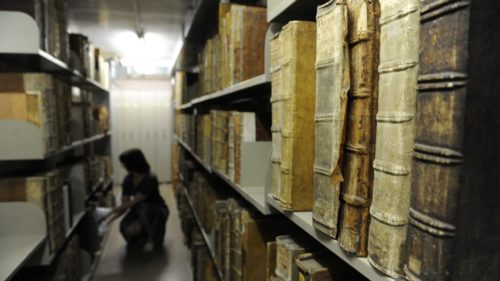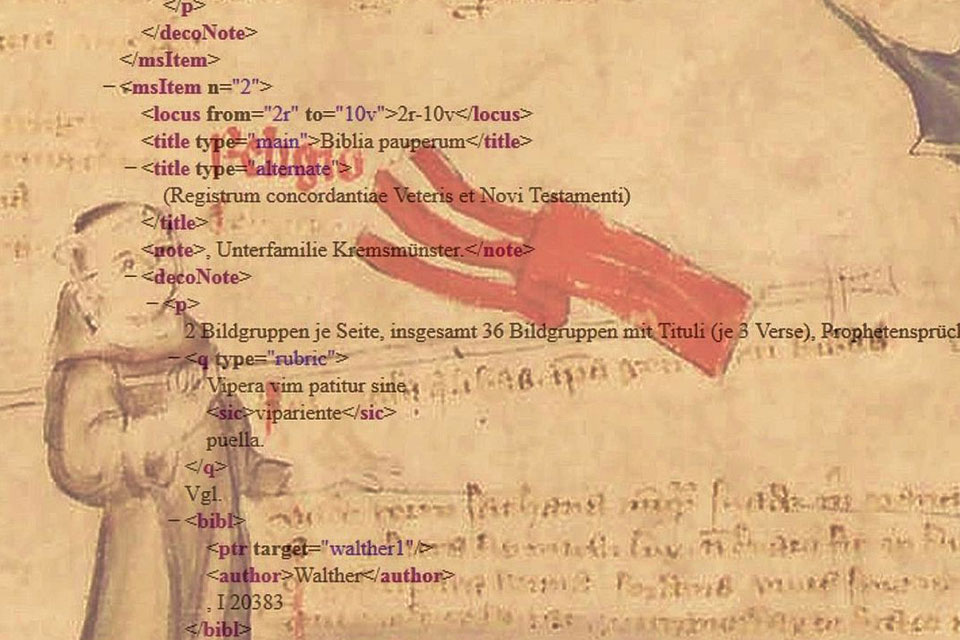Manuscripta Mediaevalia is a classic example of a digitisation project overrun by technological advances. A group of German medievalists are working to remedy this.
Back in the last millennium, when the idea was first launched to create a comprehensive digitised catalogue of Medieval manuscripts preserved in German libraries and museums, the construction of specific technical platforms by over-eager IT-professionals was the norm.
Hence, many of the projects from that time have suffered from numerous technical ailments. One of these is that very many of them actually demand that people updating the sites can do at least some HTML-coding. Another – although perhaps the least of the challenges – is to have such sites updated to be mobile-friendly.
Manuscripta Medievalia is just such a project. Imagined in the 90s, the site was launched in 2003. It now holds records of more than120.000 documents and manuscripts from the Middle Ages as they are registered in more than 200 museums and libraries in Germany. It also links to manuscripts when fully digitised and thus offers a fine overview of what may be found in most of the major German collections.
Wobbly Search

To give an example, a standard search for “Sachsenspiegel” – the name of the most important German Law-book from c. 1220 – yields 630 posts; of these 43 link to digitised manuscripts. A valuable resource if you are for instance researching the history and the semantics surrounding a particular rule of law.
Or to give another example: The British Library recently announced that it had digitised Cotton MS Caligula A VII, f. 11r, which holds one of two of the extant copies of the old Saxon poem, The Heliand. Perhaps composed at the behest of the Emperor Louis the Pious, it stems from the beginning of the 9th century and renders the Evangeliary within a warrior-inspired ethos. In the announcement from the British Library we learn that there exists another copy of the poem in a manuscript kept in the Bayerische Staatsbibliothek in Munich (Cgm 25) as well as additional fragments. Of these, no particulars are given. A search in Manuscripta Mediaevalia, of course, links to the manuscript kept in München, which – it turns out – has been entirely digitised. Thus students are suddenly able to compare the two texts in the originals. However, the search also helps to identify at least some of the fragments (München, Bayerische Staatsbibliothek, Cgm 8840).
Like other such older projects, it nevertheless suffers from inbuilt challenges. One such element is an inflexible search-machine, which means that it is overly complicated – again just to give an example – to locate the manuscripts about a specific emperor. For instance, Heinrich III will be inexorably mixed up with Heinrich II (and many other posts).
The good news is that the group of scholars responsible for the project recently applied for funding to renovate this precious resource under a new name: Handschriftenportals. Supported by the National Library in Berlin as well as the University Library in Leipzig, The Herzog August Library in Wolfenbütttel and the State Library in München it is very much hoped the consortium will be able to lay its hands on the necessary funding.
The renovation – or presumably a total lift-over of the 90.000+ records – will be followed up with running updates on the site as well as a separate blog. So far, not much information about the new project has been forthcoming and we must sincerely hope that the consortium does not fall for a solution, which is – once again – built from scratch. There are so manyelegant CMS-systems readily available, which – if one chooses a standard and twitch it – will be automatically updated ( WordPress, Typo3, Dropal etc) and which are used by some major cultural institutions world-wide (The National Museum in Copenhagen thus uses Typo3). Such a solution would also automatically solve the problem with the seach function. It is in connection with this rather scary to dicover that the photo used as introductionary cover for the new portal shows laid-over HTML-coding! (See featured photo on this post)
Copyright
Will this project at some point join up with the catalogues of manuscripts such as those of the British Library, The Bibliotheque nationale, and the Vatican? And many others? May we even hope that the Spaniards and the Portuguese will see a point in opening more up for their treasures?
One of the challenges here is of course that such ventures are inexorably mixed up with questions of copyrights of the countless treasures of manuscripts. Although formally held by public or private institutions, and often jealously guarded by curators and scholars, we – the public – may rightfully claim that they belong to humanity as such. This links up with the current EU proposal to secure European-wide copyright exceptions in connection with the fair use of our digitised Cultural Heritage in relation to teaching, preservation and public promotion. One wonders whether the present project is taking these questions into account?
SOURCES:
Save
